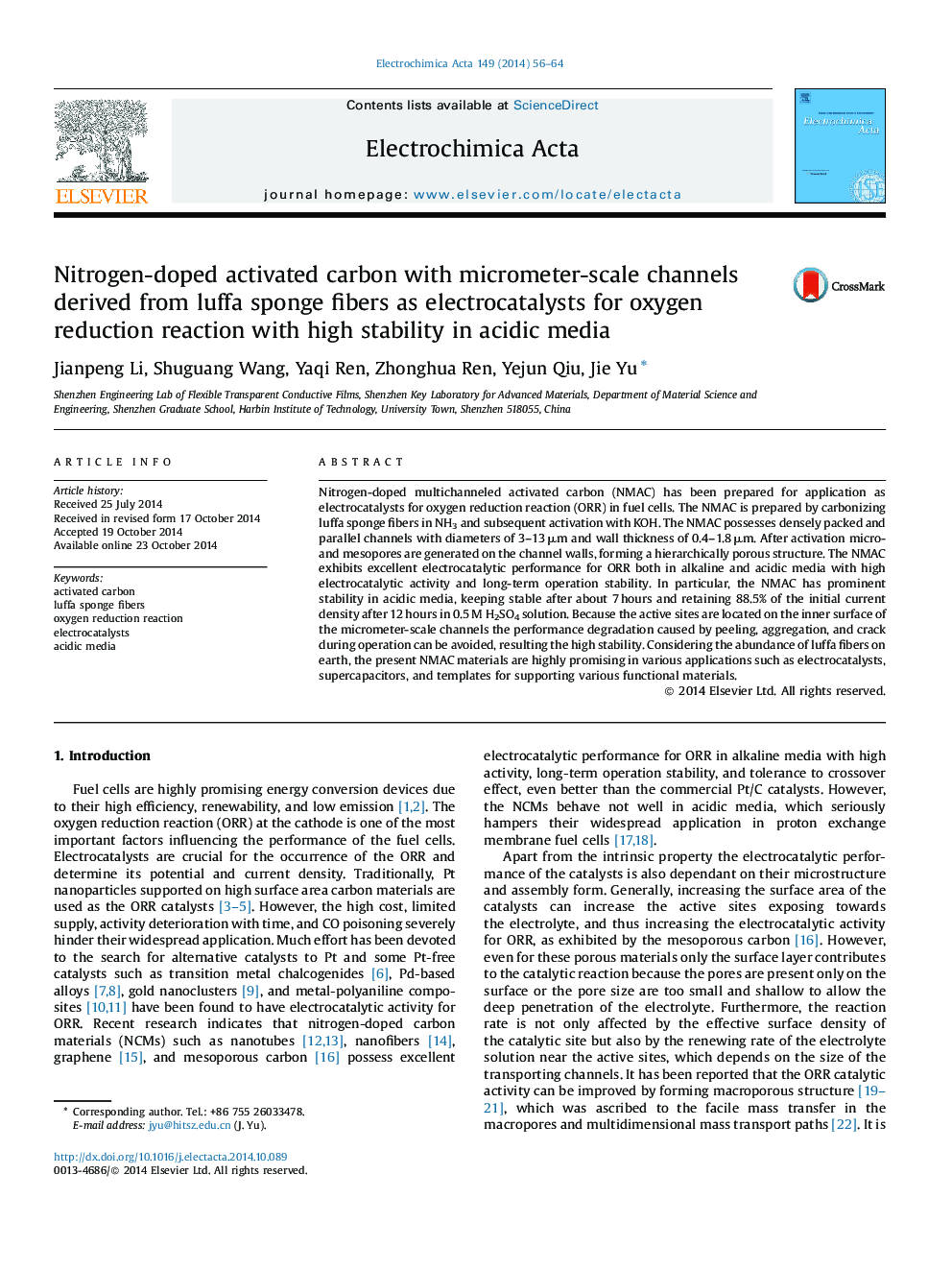| Article ID | Journal | Published Year | Pages | File Type |
|---|---|---|---|---|
| 184936 | Electrochimica Acta | 2014 | 9 Pages |
•Nitrogen-doped multichanneled activated carbon (NMAC) is prepared from luffa sponge fibers.•The NMAC combines micrometer-scale channels and micro-/mesopores.•The NMAC possesses electrocatalytic activity for ORR both in alkaline and acidic media.•The NMAC exhibits high stability for ORR in acidic media.
Nitrogen-doped multichanneled activated carbon (NMAC) has been prepared for application as electrocatalysts for oxygen reduction reaction (ORR) in fuel cells. The NMAC is prepared by carbonizing luffa sponge fibers in NH3 and subsequent activation with KOH. The NMAC possesses densely packed and parallel channels with diameters of 3–13 μm and wall thickness of 0.4–1.8 μm. After activation micro- and mesopores are generated on the channel walls, forming a hierarchically porous structure. The NMAC exhibits excellent electrocatalytic performance for ORR both in alkaline and acidic media with high electrocatalytic activity and long-term operation stability. In particular, the NMAC has prominent stability in acidic media, keeping stable after about 7 hours and retaining 88.5% of the initial current density after 12 hours in 0.5 M H2SO4 solution. Because the active sites are located on the inner surface of the micrometer-scale channels the performance degradation caused by peeling, aggregation, and crack during operation can be avoided, resulting the high stability. Considering the abundance of luffa fibers on earth, the present NMAC materials are highly promising in various applications such as electrocatalysts, supercapacitors, and templates for supporting various functional materials.
Graphical abstractNitrogen-doped activated carbon with micrometer-scale channels derived from luffa sponge fibers as electrocatalysts for oxygen reduction reaction with high stability in acidic media.Figure optionsDownload full-size imageDownload as PowerPoint slide
